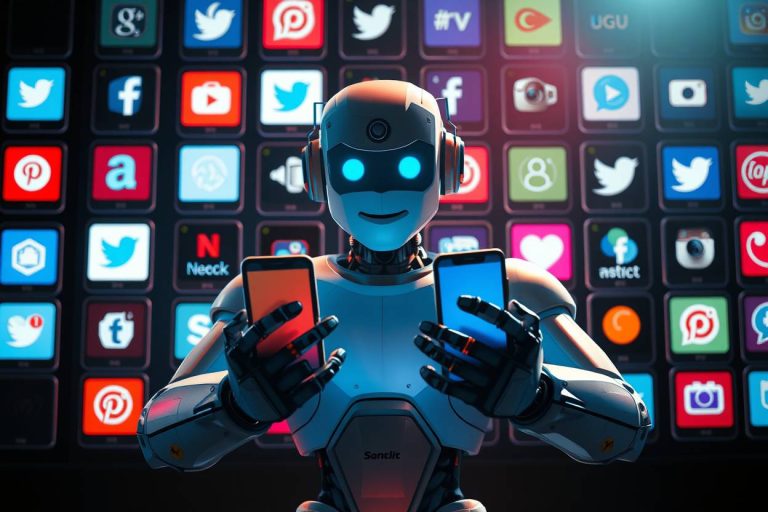Leadership in the Age of AI: 5 Human-Centered Strategies for Modern Business Leaders

The business landscape has transformed dramatically in recent years, with artificial intelligence reshaping everything from customer interactions to strategic decision-making. While AI promises unprecedented efficiency and insights, it has also created new challenges for leaders who must navigate this technological revolution while maintaining their humanity and connection with their teams.
Leadership in the age of AI requires a delicate balance: embracing powerful technologies that can streamline operations while doubling down on uniquely human skills that no algorithm can replicate. Today’s leaders face the paradox of needing to move faster than ever while remaining thoughtful, empathetic, and strategic in their approach.
The statistics are telling. According to recent research, 73% of executives believe AI will significantly impact their leadership approach within the next three years, yet 68% worry about losing the human touch that makes great leadership effective. This tension between technological advancement and human connection defines the modern leadership challenge.
As AI reshapes industries at breakneck speed, leaders who thrive will be those who can harness technology’s power while strengthening their most human capabilities: emotional intelligence, creative problem-solving, ethical decision-making, and authentic relationship building. The goal isn’t to compete with AI, but to complement it in ways that create more effective, more human organizations.
Here are five research-backed strategies for leading effectively in our AI-driven world:
1. Master Strategic Delegation in an AI-Enhanced Environment
The art of delegation has evolved significantly in the AI era. Modern leaders must now consider three types of task distribution: what should be handled by humans, what can be automated by AI, and what requires human-AI collaboration.
Smart delegation starts with understanding that leadership in the age of AI means being the orchestrator of both human talent and technological capabilities. Your unique value lies in tasks requiring emotional intelligence, complex judgment, creative thinking, and strategic vision—areas where human insight remains irreplaceable.
Begin by conducting an “AI audit” of your responsibilities. Identify routine analytical tasks, data processing, and pattern recognition work that AI can handle more efficiently. For instance, an AI scribe can capture meeting notes, transcribe discussions, and even identify action items, freeing you to focus entirely on facilitating meaningful dialogue and building consensus.
The key is empowering your team with both clear expectations and the right technological tools. When you delegate effectively, you’re not just freeing up your time—you’re creating opportunities for your team members to develop higher-level skills while AI handles the routine work. This approach fosters innovation and keeps your organization competitive in an increasingly automated world.
2. Set clear boundaries and make it stick
Set some boundaries and stick to them. It’s super tempting to be always on when you’re a business leader, especially in an industry that’s super fast paced. But burnout is real, and it often starts with a lack of boundaries. Establishing clear work hours, resisting the urge to micromanage, and scheduling downtime like you would any other important meeting is how you get forward. Protect your energy and you’ll be a much more efficient and balanced leader over the long term.
In our hyperconnected, AI-accelerated world, the pressure to be constantly available has intensified. AI tools can make us feel like we should be responding to everything immediately, but this mentality is counterproductive. The most effective leaders understand that strategic thinking requires protected time away from the constant stream of AI-generated insights and notifications.
Consider implementing “analog hours”. Periods where you disconnect from AI tools and digital interfaces to think, reflect, and connect with your team on a human level. These boundaries aren’t just about personal well-being; they’re about maintaining the strategic perspective that only comes from stepping back from the day-to-day algorithmic churn.
3. Cultivate Human Skills That AI Cannot Replicate
While AI excels at data analysis and pattern recognition, it cannot replace the uniquely human aspects of leadership: empathy, ethical reasoning, cultural sensitivity, and the ability to inspire and motivate others through challenging times.
Invest deliberately in developing these irreplaceable human capabilities. Practice active listening in every interaction. Develop your emotional intelligence through regular feedback and self-reflection. Strengthen your ability to communicate complex ideas in simple, compelling ways that resonate with diverse audiences.
The leaders who will thrive in the AI age are those who become more human, not less. This means showing vulnerability when appropriate, acknowledging uncertainty, and demonstrating genuine care for your team’s growth and well-being. These qualities become even more valuable as they become rarer in an increasingly automated world.
Focus on building authentic relationships with your team members. Understand their career aspirations, personal challenges, and what motivates them beyond their job descriptions. This human intelligence creates loyalty and engagement that no AI system can generate.
4. Design AI-Human Collaboration Systems
Rather than viewing AI as a replacement for human capabilities, the most successful leaders are creating systems where AI and humans work together synergistically. This requires understanding both the strengths and limitations of AI tools in your specific context.
Implement AI tools that enhance human decision-making rather than replace it. For example, use predictive analytics to identify trends and risks, but rely on human judgment to interpret what these patterns mean for your organization’s unique culture and strategic goals.
Create feedback loops where human insights improve AI performance, and AI insights inform human strategy. This might involve training your team to work effectively with AI tools, understanding when to trust algorithmic recommendations and when to rely on human intuition.
The goal is to create what researchers call “augmented intelligence”, systems where AI amplifies human capabilities rather than replacing them. This approach leads to better outcomes than either humans or AI could achieve alone.
5. Foster Continuous Learning and Adaptability
The pace of AI advancement means that the tools and strategies that work today may be obsolete in months, not years. Leadership in the age of AI requires embracing continuous learning as a core leadership competency.
Stay informed about AI developments in your industry, but don’t try to become a technical expert. Instead, focus on understanding the strategic implications of new technologies and how they might impact your team, customers, and competitive landscape.
Encourage experimentation within your organization. Create safe spaces for your team to test new AI tools and approaches without fear of failure. The organizations that will lead in the AI age are those that can learn and adapt faster than their competitors.
Build learning into your regular routines. Dedicate time each week to exploring new tools, reading about industry trends, and discussing the implications with your team. This isn’t just about staying current—it’s about modeling the growth mindset that will be essential for your organization’s success.
Leading with Humanity in an AI World

The future belongs to leaders who can navigate the tension between technological capability and human wisdom. While AI will continue to automate routine tasks and provide unprecedented analytical insights, the need for leaders who can inspire, connect, and guide through uncertainty has never been greater.
The most effective leadership in the age of AI combines the efficiency of smart automation with the irreplaceable value of human judgment, creativity, and empathy. By focusing on these uniquely human capabilities while thoughtfully integrating AI tools, you can create organizations that are both highly efficient and deeply human.
Remember: AI is a tool to amplify your leadership, not replace it. The leaders who thrive will be those who use technology to free up time and mental energy for the work that truly matters, building relationships, inspiring innovation, and creating meaning in an increasingly complex world.




